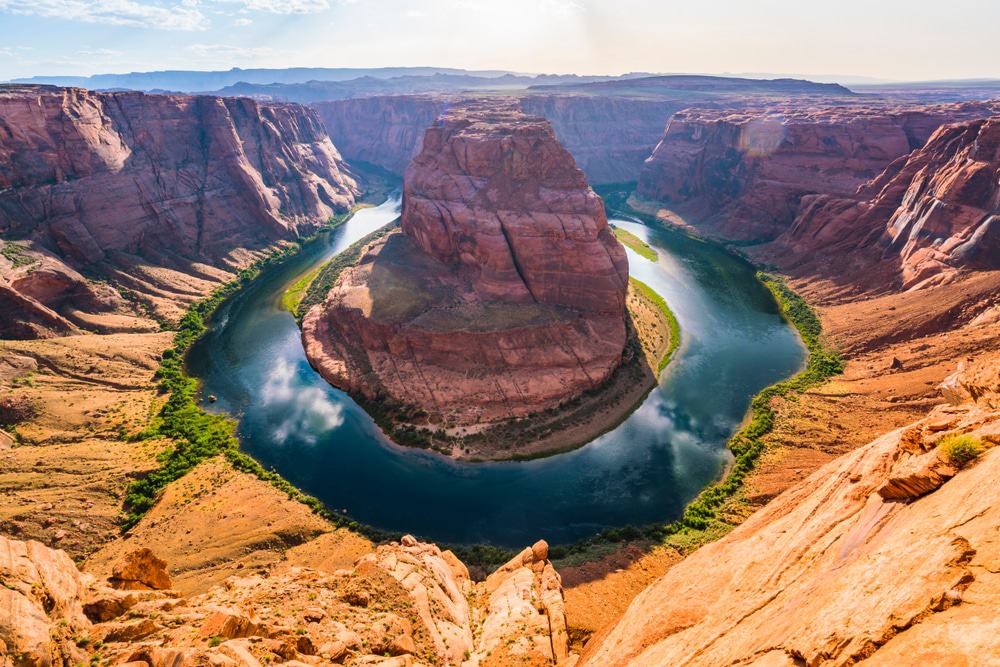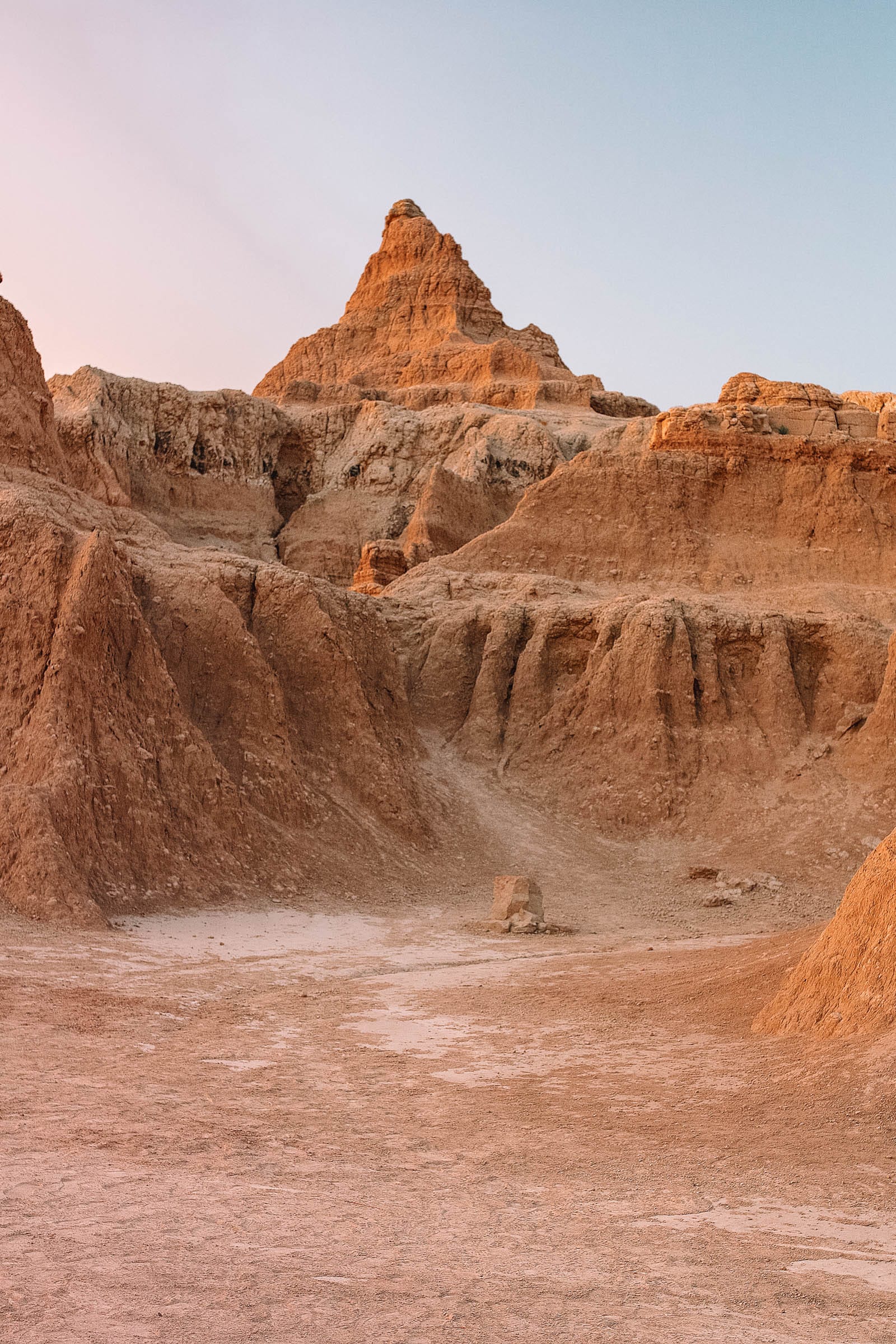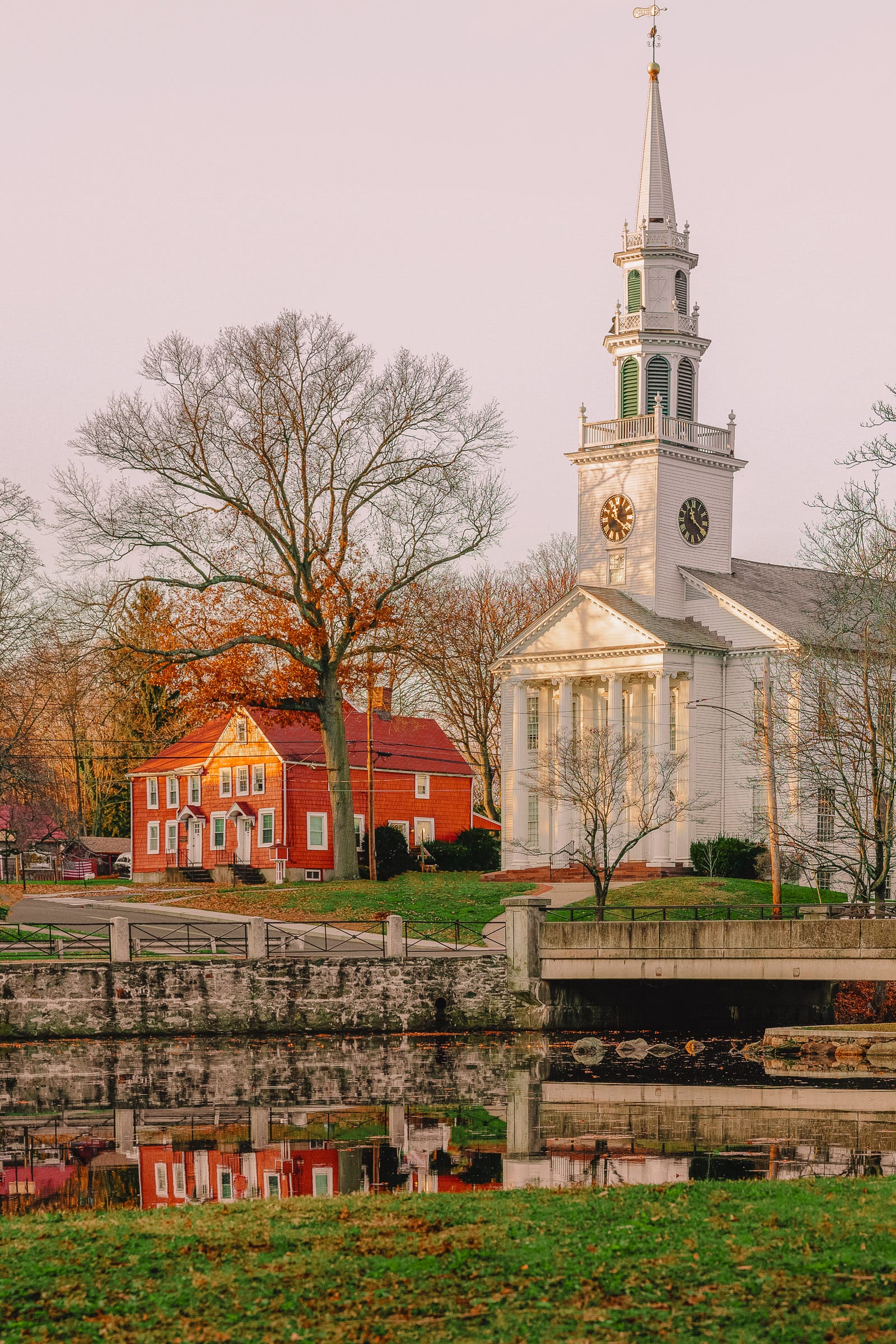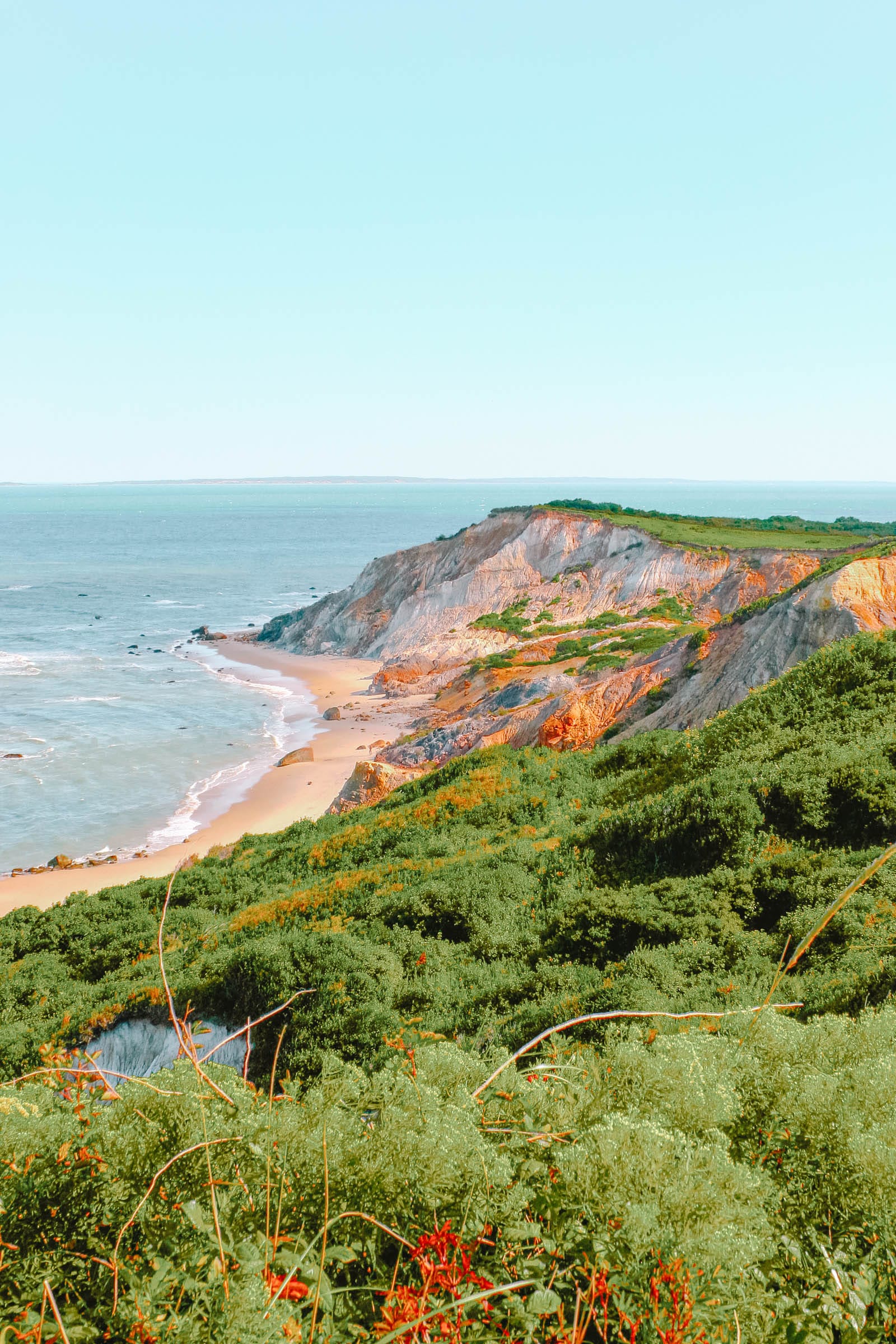Summary
- Antelope Canyon
- Grand Staircase Escalante National Monument
- Carl Hayden Visitor Center
- Lake Powell, Glen Canyon Dam
- John Wesley Powell Museum
- Coconino National Forest
- Horseshoe Bend
- Waterholes Canyon
- Lee’s Ferry
- Rainbow Bridge National Monument
- Vermilion Cliff National Monument
- Tower Butte
- The Rimview Trail
- Into the Grand
- Navajo Village Heritage Center
In my perspective, Northern Arizona presents a plethora of remarkable experiences, and I have realized that the quaint town of Page in Coconino County serves as an exceptional foundation for visitors, with a multitude of activities in close proximity. One of Page’s primary benefits is its nearness to the Grand Canyon, which can be accessed within a couple of hours by car.
Situated on the southern shores of Lake Powell, Page is characterized by expansive bodies of water ideal for those who appreciate outdoor activities. Despite having a modest population of approximately 7,500 residents, Page enjoys a favorable climate owing to its elevation of around 4,000 feet.
For campers and hikers like myself, Page is an idyllic destination. Furthermore, for those wishing to be nearer to the water, there is the opportunity to rent a houseboat on the lake—an exhilarating chance to engage with the tranquil environment.
Without further delay, allow me to present a compilation of 15 remarkable activities to undertake in Page before continuing your exploration.
1. Antelope Canyon
 Source: tharathep lomchid / shutterstock
Source: tharathep lomchid / shutterstockAs an enthusiast of Arizona, one of the sites I strongly endorse visiting is Antelope Canyon, famously recognized as one of the most photographed locations in the state. It is vital to acknowledge that this breathtaking canyon resides on Navajo territory, and to explore it, it is necessary to have a Navajo guide accompany you.
Engaging in a guided tour is unquestionably the most effective method to appreciate the stunning aspects of Antelope Canyon, with most excursions lasting slightly over an hour. If you are eager to capture captivating photographs during your visit, many professionals recommend scheduling a tour in the late morning. This timing allows sunlight to illuminate the canyon, creating a captivating effect that enhances its charm.
While both the upper and lower sections of the canyon possess their unique appeal, it is noteworthy that the upper section tends to be more frequented by visitors. Moreover, if mobility is a concern, I suggest selecting the upper section, as it offers better accessibility.
2. Grand Staircase Escalante National Monument
 Source: Arlene Waller / shutterstock
Source: Arlene Waller / shutterstockI am pleased to highlight the extraordinary Grand Staircase Escalante National Monument, which is the largest park within the southwestern United States, encompassing an impressive 1.8 million acres. Nevertheless, it should be noted that its size has been recently diminished based on presidential decree. National monuments are typically established by US presidents and administered by various federal agencies.
This remarkable monument extends across both Utah and the state boundary, stretching from the stunning Colorado River to the breathtaking Bryce Canyon National Park. Numerous excavations within its confines have unearthed extraordinary prehistoric animal fossils, which continue to intrigue and inspire.
It is a venue where history comes alive, offering an unparalleled opportunity to investigate the traces left by ancient beings that once occupied this land.
3. Carl Hayden Visitor Center
 Source: John Sartin / shutterstock
Source: John Sartin / shutterstockFor those keen to gain a deeper understanding of the fascinating Glen Canyon Dam and its significant role, visiting the center located near the Glen Canyon Bridge is highly advisable. This educational center is named after a notable congressman and senator instrumental in Arizona’s water management.
Once inside, visitors have the opportunity to delve into the rich history of water storage in the Colorado River Basin, particularly focusing on the Glen Canyon area. The center provides a plethora of resources to enhance comprehension, featuring informative maps, engaging videos, and captivating exhibits.
4. Lake Powell, Glen Canyon Dam
 Source: Lorcel / shutterstock
Source: Lorcel / shutterstockSince the construction of the Glen Canyon Dam in 1963, the magnificent Lake Powell has been established, functioning as both a crucial water reservoir and a valuable source of electricity for the surrounding area.
A visit to Lake Powell presents a plethora of opportunities for memorable experiences. From partaking in boat excursions and admiring the towering 700-foot dam to enjoying the tranquility of fishing or kayaking on its calm waters, there is something to suit everyone’s taste. Additionally, the local Natural History Association provides insightful tours of the dam, offering a more profound comprehension of its engineering significance.
With a vast length of 186 miles, Lake Powell majestically spans an impressive surface area of around 266 square miles and an average depth of 132 feet. These figures demonstrate the grand scale and beauty of this picturesque reservoir.
5. John Wesley Powell Museum
 Source: Malachi Jacobs / shutterstock
Source: Malachi Jacobs / shutterstockAllow me to introduce you to the remarkable life of John Wesley Powell, an exceptional one-armed soldier, scientist, and pioneer who played a crucial role in bringing the majestic Colorado River to public attention. Almost a century and a half ago, Powell undertook daring expeditions, navigating the river in modest vessels—a remarkable accomplishment in its own right.
To honor his contributions, a museum dedicated to him showcases the captivating narrative of his expeditions and provides extensive information about the history of Page, the very community we are exploring.
A particularly compelling area of the museum focuses on geology and paleontology. Visitors can encounter incredible excavations dating back millions of years, revealing the secrets of ancient terrains. This experience offers a fascinating journey through time.
Moreover, the museum expands beyond geological marvels, exploring the rich histories of the region’s inhabitants. From the ancient Anasazi civilization to the vibrant cultures of Native Americans, the museum highlights the heritage of the early peoples who inhabited this land.
6. Coconino National Forest
 Source: Brent 1 / shutterstock
Source: Brent 1 / shutterstockCoconino National Forest stands out as an exceptional woodland sanctuary, abundant in diversity. Within its expansive borders, one can explore contrasting landscapes—ranging from captivating desert regions and expansive tundra to majestic ponderosa pine forests and the iconic red rocks of Sedona.
For outdoor enthusiasts and camping aficionados like myself, this forest is a true paradise. Prepare to be enchanted by the natural wonders awaiting you: charming small lakes, breathtaking mountains, picturesque valleys, and meandering streams filled with crystal-clear freshwater.
In addition to its stunning landscapes, Coconino National Forest is a haven for a variety of wildlife species. The forest is home to over 300 bird species, an impressive range of 100 mammals, along with diverse reptiles and snakes, making it a true sanctuary for nature lovers and wildlife enthusiasts.
While navigating this remarkable forest, it is crucial to adhere to the principle of “leave no trace” to ensure the conservation and protection of this pristine wilderness for future generations.
7. Horseshoe Bend
 Source: Checubus / shutterstock
Source: Checubus / shutterstockThere are certain locations that resist proper depiction through photographs, as they embody an enchanting quality that can only be genuinely appreciated in person. Horseshoe Bend is undoubtedly one such site. This stunning bend of the Colorado River, forming a perfect horseshoe shape, is renowned as one of the most photographed natural wonders in the vicinity, though its true splendor can only be experienced firsthand.
One of the remarkable aspects of visiting Horseshoe Bend is the freedom to approach as close as one wishes, as there are no railings or entrance fees to hinder exploration. However, caution is advised while venturing near the edge.
The trek to Horseshoe Bend and back spans just 1.5 miles, yet prepare to halt frequently to capture the magnificent scenery with your camera. Be aware that shadows can affect photo quality at various times of the day. For optimal photographic conditions, aim to arrive around midday when lighting is most favorable.
8. Waterholes Canyon
 Source: EasyArts / shutterstock
Source: EasyArts / shutterstockI had the opportunity to traverse the remarkable trail of Waterholes Canyon, which meanders through a striking landscape of vibrant red sandstone leading to the majestic Glen Canyon. As I followed the trail, I was astounded by the sight of flowing water flanking both sides of the US89 highway, gradually deepening as it moves along.
However, the access to Waterholes Canyon has become more restricted in recent years. Recent announcements indicate that both federal and tribal regulations prohibit entry into the canyon without participating in an organized tour led by the Navajo. This regulation helps to maintain the preservation of this extraordinary natural jewel.
When exploring these areas, it is prudent to value the insights and knowledge of the local community. Their expertise can significantly enhance your overall experience and inform your explorations. Additionally, it is advisable to travel with a companion or as part of a group to ensure safety.
9. Lee’s Ferry
 Source: Ray Redstone / shutterstock
Source: Ray Redstone / shutterstockMy exploration of Lee’s Ferry began with a look into the early settlements established in this area. As I wandered through the surroundings, I came across a collection of well-preserved historic buildings adjacent to the contemporary settlement. Among the intriguing remnants of history, I discovered the remnants of a ferry crossing nestled within the stunning Glen Canyon.
Located just 10 miles from Page, Lee’s Ferry offers an exceptional opportunity to embark on a fascinating boat tour along the magnificent Colorado River. As I drifted down this grand river, which serves as the natural boundary between Arizona and Utah, I was in awe of the breathtaking scenery revealed at every turn. Alternatively, for those seeking a more peaceful experience, the banks of the river provide an ideal setting for fly-fishing, complemented by the surrounding picturesque landscapes that create a beautiful backdrop for casting a line. This setting combines the thrill of outdoor sport with the charm of nature’s beauty.
10. Rainbow Bridge National Monument
 Source: PETER LAKOMY / shutterstock
Source: PETER LAKOMY / shutterstockUpon learning about Rainbow Bridge, I found it intriguing to realize that it was only uncovered by white settlers approximately a century ago, while Native Americans have revered this stunning natural bridge for centuries. Acknowledging its significance, President Taft designated it as a national monument shortly after its discovery.
Rainbow Bridge National Monument stands as one of the largest natural bridges known globally. Out of respect for its cultural importance to Native Americans, visitors are kindly asked to refrain from walking underneath the bridge. Nonetheless, this request does not present a challenge, as the most breathtaking views of the bridge can be captured from a short distance away. By taking a few steps back, one can encompass the complete expanse of the bridge within a single photograph.
As I gazed upon the grandeur of Rainbow Bridge, I was deeply moved by this natural wonder. The striking beauty of the bridge, combined with its rich cultural significance, provides an experience that transcends mere photographs, serving as a reminder of the profound bond between nature and spirituality.
11. Vermilion Cliff National Monument
 Source: Galyna Andrushko / shutterstock
Source: Galyna Andrushko / shutterstockI had the extraordinary pleasure of exploring the vast expanse of the Vermilion Cliffs National Monument, a breathtaking expanse that covers nearly 300,000 acres. This monument features notable landscapes, including the towering Vermilion Cliffs, the picturesque Paria Plateau, and a multitude of enchanting buttes and canyons. While traversing this diverse terrain, I was astonished by the elevation variance, which climbs from just over 3,000 feet to an impressive 6,500 feet.
For those eager to connect with the natural beauty of Arizona, local guidance is available to assist in planning multi-day backpacking excursions within the monument. Such adventures offer a unique experience to engage with the magnificent landscape while encountering the vibrant flora and fauna that inhabit this area. There is truly no better way to immerse oneself in the wilderness than by partaking in a backpacking journey through this untouched territory.
As I established camp just outside the monument’s borders, I found peace in the serene expanse, eagerly anticipating the hiking endeavors that awaited. It is important to note that a permit is required for hiking within the monument. This policy is designed to protect the natural environment and help manage visitor numbers, promoting a sustainable coexistence between humans and nature.
12. Tower Butte
 Source: Nicola Pulham / shutterstock
Source: Nicola Pulham / shutterstockParticipating in a helicopter tour from Page Airport was an exceptional opportunity that allowed me to behold the stunning Tower Butte in all its magnificence. This distinctive rock formation rises dramatically from the desert landscape, inviting awe with its impressive stature.
As our helicopter ascended towards Tower Butte, I was captivated by its flat summit, which served as a landing pad for our flight. After touching down on the butte, I was greeted with a breathtaking 360-degree view that left me speechless. The unimpeded vistas deeply immersed me in the striking beauty of the surrounding scenery, allowing me to capture unforgettable images.
During our aerial excursion, our adept pilot skillfully navigated the skies, highlighting the magnificent Glen Canyon and the shimmering expanse of Lake Powell. The vastness of the Grand Staircase unfolded below us, while the vibrant shades of the Vermilion Cliffs painted a mesmerizing backdrop. The pilot’s insightful commentary guided my understanding of the region’s most prominent features, enhancing my appreciation for the natural wonders.
Experiencing the aerial views of Tower Butte and the encompassing landscapes was exhilarating—an adventure that left a lasting impression on me. The helicopter tour afforded a unique perspective, enabling me to truly grasp the vastness and grandeur of the region from a bird’s-eye view.
13. The Rimview Trail
 Source: Maxxis Tires – USA / Facebook
Source: Maxxis Tires – USA / FacebookIf you are interested in covering more ground and discovering the scenic landscapes surrounding Page, a mountain biking excursion can be an excellent option. The choice between hiking or biking may depend on the time available. For those seeking a laid-back experience or are new to biking, the Rimview Trail offers an ideal option. Spanning approximately 10 miles around Page, this trail features a mix of paved surfaces, making it suitable for both biking and leisurely walks.
As I embarked on my journey along the Rimview Trail, I ensured I wore comfortable footwear and had sufficient water, particularly during hot days when shade is scarce. Staying hydrated and protecting oneself from the sun is vital while traversing this picturesque path. Additionally, for visitors wanting to bring their dogs, they are allowed as long as they are kept under complete control, ensuring a secure and enjoyable visit for all.
As I rode or walked along the Rimview Trail, I couldn’t help but marvel at the stunning views unfolding around me. The paved path allowed for effortless navigation, and I appreciated the opportunity to fully engage with the natural beauty that enveloped me. Each turn revealed breathtaking panoramic vistas, filling me with a profound sense of serenity.
14. Into the Grand
 Source: Into The Grand / Facebook
Source: Into The Grand / FacebookUpon entering Into the Grand, I was immediately transported into an engaging experience replete with Native American music, songs, dances, and an array of authentic Native American cuisine. The venue, situated in a converted warehouse, radiated a unique charm that complemented the essence of the evening. Such a setting felt entirely appropriate for an experience steeped in tradition.
The warm welcome I received from the host ensured that I was comfortably seated, and the presence of complimentary snacks of chips and salsa added to the hospitable ambiance. This thoughtful gesture helped create a welcoming environment from the outset.
The venue buzzed with anticipation as I awaited the captivating performances. Native American songs filled the air, accompanied by the rhythmic beats of traditional music. Dancers moved gracefully, conveying stories and celebrating their rich cultural heritage. It was a feast for both the senses and the spirit.
As the performances engrossed my attention, the aroma of genuine Native American cuisine wafted through the air, enhancing the immersive experience. The menu featured an assortment of traditional dishes that highlighted the vibrant flavors and culinary customs of Native American culture. Each bite was a delightful journey into indigenous tastes and customs.
Into the Grand offered an evening of cultural immersion, where entertainment, music, dance, and exquisite food converged to create a memorable experience. The unpretentious yet inviting atmosphere of the former warehouse allowed the essence of the event to flourish, encouraging guests to embrace the richness of Native American culture.
15. Navajo Village Heritage Center
 Source: Navajo Village Heritage Center / Facebook
Source: Navajo Village Heritage Center / FacebookUpon entering this charming, family-operated facility, I recognized that I had discovered a hidden treasure, especially for families traveling with children. The educational aspects were apparent from the moment I arrived. I delved into the world of the Navajo people, gaining insights into their traditional lifestyle and the unique characteristics of their dwellings.
One of the highlights of the visit was the chance to explore a typical Navajo home. The knowledgeable staff illustrated the construction techniques and thoughtful design elements that contribute to the uniqueness of these homes. It was enlightening to understand the cultural significance of each aspect of the dwelling, enhancing my appreciation of the Navajo people’s connection to their environment.
As part of my visit, I experienced a demonstration of the art of Navajo rug weaving. I was captivated while observing skilled artisans create detailed patterns, witnessing the meticulous process of transforming yarn into beautiful works of art. The staff provided valuable insights into the various techniques and materials involved in Navajo rug making.
Further into the experience, discussions surrounding the roles of women in Navajo society highlighted their crucial contributions to the community. I gained a deeper appreciation for the vital roles they embody in preserving cultural heritage and passing it down to future generations. Through engaging conversations and informative exhibits, I developed a profound understanding of the values and customs that shape Navajo life.
To culminate my visit, the facility treated us to a captivating display of Navajo dancing. The dynamic movements and vibrant attire of the performers transported us into a realm of cultural expression and festivity. The performances were both engaging and meaningful, demonstrating the beauty and significance of Navajo dance traditions.




